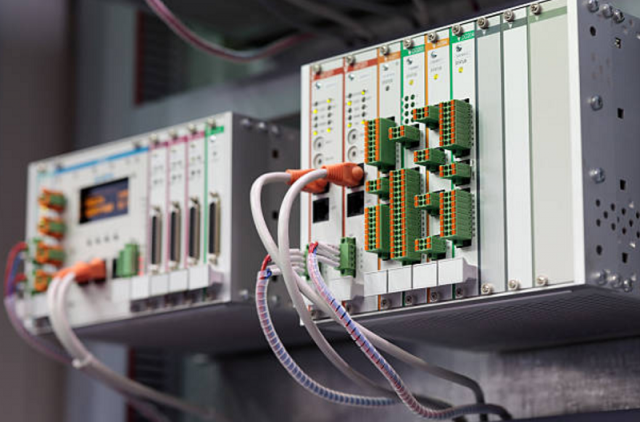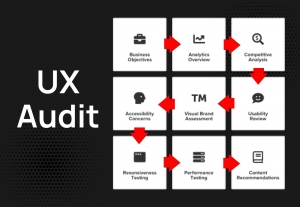The ever-growing frontier of electronics and industrial automation is tailoring custom power supply options for patrons. OEM (Original Equipment Manufacturer) Switch Mode Power Supply (SMPS) is facing challenges to change, enhance, and streamline their offerings to meet system, legal, and space constraints requirements in sophisticated, and compact systems.
Automation equipment distributors will gain competitive leverage if they closely monitor the developments from OEM SMPS manufacturers. The downtime for businesses is a direct hit to revenue, which necessitates ensuring smooth workflow and system reliability that is influenced by the compatibility, design, and overall system performance of new products.
This article uncovers what strategy alterations OEM SMPS providers will adopt in 2025, the new definition of ‘customization,' and the shift in sourcing logic needed by automation-driven companies.
From Uniformity to Tailored Customization in SMPS Designs
Traditionally, vendors of SMPS had followed the principles of mass production in which they offered universal models with default sizes, applications, and voltage outputs. These products are still prevalent in today's society; however, they do not meet the modern industrial requirements. Most advanced equipment, in this day and age, is designed to work under specific power demands and not to the connected load.
By 2025, OEM SMPS manufacturers understand that the emerging Industry 4.0 systems cannot be served with a generic SMPS solution. Customers are now asking for:
Changeable voltage levels
Flexibility in the device dimensions
Advanced heat dissipation
Built-in communication ports for higher-level protocols like CAN, Modbus, or Ethernet
Intelligent pattern recognition and fault detection
Customization goes above output configuration to include input options like elasticity of the casing, regulatory markings, and resistance profile to mechanical stress for the environments. This shift allows SMPS suppliers to develop modular architectures that provide tailored solutions with minimal latency and high dependability.
How Novel SMPS Expectations Are Evolving From Automation-Centric Industries
With the increasing scope of industrial automation in manufacturing, energy, and transportation, the requirements from switch mode power supplies have changed. Companies collaborating with an automation products distributor have started prioritizing power solutions that:
Minimize downtime through built-in redundancy.
Integrate into programmable logic controllers (PLCs).
Communicate data for predictive maintenance.
Are dependable during extreme temperature or high-vibration settings.
All of these have been compelling the automation industry to improve its product development cycle. Whereas most OEM providers used to only offer post-production changes, many now involve clients within the co-design phase in order to create custom solutions. Tailored collaborative engineering models are being adopted to move away from transactional frameworks to better align system performance objectives and component capabilities.
The collaboration between oem smps manufacturers and automation products distributor networks serves this purpose. These professionals are stationed in the field, close to the applicable solutions, allowing them to merge engineering with real-world frameworks.
Modular Design: The Foundation for Customization in 2025
A groundbreaking enhancement opening the door for this variety of customization is the modular design of SMPS. Instead of building entire new units from scratch, OEM SMPS providers are now supplying:
Replaceable modules such as voltage converters, thermal sensors, or communication units that can be added or removed.
Plug-and-play configurations: Power supplies that can be fitted in different system architectures with slight modifications.
Multi-output support: Enabling a single unit to service multiple devices having different load requirements.
This methodology further aids in meeting the time-to-market goals for tailored products while providing the ability for customers to scale and reconfigure their systems whenever necessary.
Automation engineers and systems integrators find the modular design of these systems appealing because it reduces the need for extensive redesigning of existing systems in different geographic locations. This also reduces training and documentation requirements for newly expanded operational areas.
Compliance And Certifications: The Customization You Didn't Know You Needed
Customization misses the mark in many senses, but as it would seem this is one of the critical yet often overlooked aspects – its regulatory compliance. Operations industrially performed in any region of the earth come under one or the other certification body and standard. For example, a product for use in Europe has to bear a CE marking, while in US markets a product may require a UL or FCC certification.
Full compliance add-on features are now a standard offering by OEM SMPS manufacturers. Some of those features include:
- Low EMI for sensitive applications
- Reinforced medical-grade insulation and isolation
- IP-rated enclosures for outdoor or dusty environments
- Fire-resistant casing materials
Within the automation industry, there is an emerging expectation that power supply manufacturers will provide detailed documentation, extensive internal testing, and third-party certification of compliance for their products. Dealing with an automation products distributor who is technically competent eliminates the need for engineering late-stage compliance loopholes.
Remote monitoring capabilities alongside add-ons are features OEM SMPS manufacturers are quickly evolving to. By 2025, many automation systems will require advanced capabilities such as:
- Real-time load status feedback.
- Temperature tracking with auto-shutdown.
- Power factor correction.
- Remote access via mobile or cloud dashboards.
This advanced capability enables automation managers to effectively monitor their entire power network, enabling them to foresee failures and schedule maintenance well in advance without interrupting production.
Automation professionals are empowered to integrate holistic power system management into their workflows, further justifying the move to deep collaboration with OEM SMPS manufacturers. Custom diagnostics and monitoring turn the SMPS from merely passive components of an operational ecosystem into active assets.
Final Remarks: Customization Will Reign as a Competitive Edge in 2025
Today's world of industrial prosperity finds no importance in the price or availability of an SMPS provider. Instead, the focus has shifted to choosing one based on ROI, customization, partnership potential, and collaboration.
OEM SMPS providers that modularized features alongside smart characteristics and customization have elevated their status to strategic partners alongside their vendors instead of mere suppliers. These manufacturers, coupled with a competent automation products distributor, aid industries in building bespoke, purpose-driven systems that are poised for the future and are devoid of shortcomings.
The conclusion we can draw here as B2B participants in automation is straightforward: In this market bursting with possibilities, there's no room for acceptance of standard-set solutions, especially those advertised as customized performance techniques.






